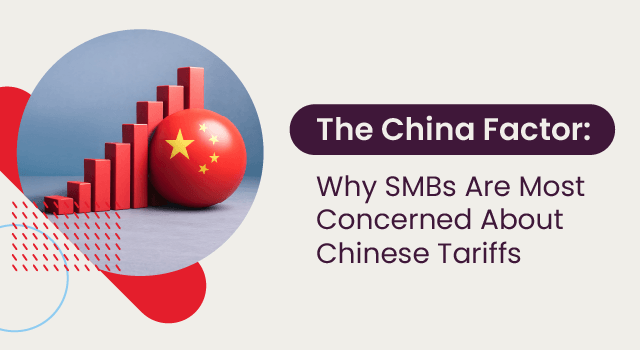Effective inventory optimization is essential for every business owner. The key to managing your inventory investment lies in how you place your orders. Timing and quantity are crucial factors. By balancing your ordering with inventory holding costs, you’ll gain a competitive edge that’s hard to match.
Here’s how to optimize your orders and get your inventory under control.
3 strategies for more effective ordering optimization
Inventory analysis is the systematic appraisal of inventory levels, patterns, and processes. Use it to make informed decisions about purchasing, production, and distribution. The analysis aims to balance supply with demand with no surplus inventory, and no stock-outs. If you can achieve this ideal state, your business should enjoy better operational efficiency and enhanced profitability.
Let’s dive into the mechanics of inventory analysis. It has three components:
- Demand forecasting: Accurate demand forecasting enables inventory levels to support expected sales and averts overstocking and stockouts.
- Inventory turnover rates: Inventory turnover measures how often your business sells and replaces inventory. A high turnover rate suggests efficient inventory management. A lower rate may show problems with product demand or excess stock. Use turnover rate analysis to identify slow-moving items and improve your product mix.
- Stock level optimization: Every business needs the right stock balance to meet demand without the added burden of high carrying costs. Optimized stocks ensure that inventory is available when needed, minimizing any surplus.
Inventory analysis offers advantages such as:
- Inventory visibility: Inventory analysis provides a clear view of current inventory levels, movements, and trends. Use this visibility to manage stock across locations. A recent Netstock survey showed that 20% of small and medium businesses (SMBs) had the wrong inventory mix with excess stock in all the wrong places. You can use inventory transparency to identify improvement opportunities in real time.
- Improved forecasting: Sales data and market trend analysis can improve demand forecasts. This leads to more informed purchasing decisions and reduces the risk of stockouts or overstock situations.
- Reduced carrying costs: Effective inventory analysis helps minimize excess inventory, which decreases carrying costs. Reducing surplus stock also allows you to release capital and allocate resources more effectively.
1. Implement accurate demand forecasting
The ability to accurately predict customer demand directly impacts inventory management. Accurate demand forecasting reduces stock-out risk and cuts the surplus stock tying up capital.
From the above, it becomes apparent that an investment in advanced inventory optimization tools can pay dividends. Demand and supply planning software like Netstock can analyze real-time sales data to deliver quality forecasts. These systems factor in seasonality and broader market trends, while historical data analysis provides insights into customer behavior. The system identifies recurring demand trends, identifying buying peaks and troughs, enabling effective inventory planning. Automatic data analysis allows for a quick response to demand changes.
Watch Netstock in action
The benefits of accurate demand forecasting:
- Enhanced customer satisfaction: It’s important to ensure product availability when customers need it. This will improve customer satisfaction and loyalty, as customers will return knowing they will find the products they want in stock.
- Reduced costs: With improved demand forecasting, you can minimize excess inventory costs, including storage, obsolescence, spoilage, and insurance. You can also reduce stock-outs and the cost of lost sales. Balanced inventories optimize your cash flow and improve your profitability.
- Improved inventory decision-making: Accurate forecasts enable effective resource allocation.
2. Optimize reorder points and order quantities
Reorder points and order quantities are essential for maintaining a steady flow of products through your supply chain. By keeping your supply line filled, you ensure that inventory levels are consistently replenished, preventing interruptions in your operations. Reorder points determine when new stock should be ordered, while order quantities dictate how much to order. When these elements are carefully managed, you can balance inventory levels to meet demand, minimize costs, and avoid both overstocking and stock-outs.
Let’s see how it’s done:
- Calculate the Economic Order Quantity (EOQ): The EOQ determines the order size that minimizes total inventory costs. Total inventory costs include the costs of ordering and the holding costs. The EOQ balances the holding and ordering costs and identifies the most cost-effective order quantity. The EOQ is the trade-off between bulk ordering to reduce ordering costs and holding manageable inventory to avoid excessive holding costs.
- Set reorder points based on lead times and average daily demand: Reorder points should account for the lead time and the average daily demand. New stock must arrive just before the inventory is depleted. The reorder point calculation should include safety stock, which represents a buffer to prevent stockouts caused by demand spikes and lead time variability.
- Regularly review and adjust reorder points: Demand patterns and supply chain conditions may change over time. Routinely review and adjust reorder points to reflect supply chain realities.
Managing reorder points and order quantities offers these benefits:
- Minimize holding and ordering costs: Reduce inventory costs to optimal levels.
- Lower stock-out and overstock risks: Properly calculated reorder points ensure that inventory is replenished in time to meet demand. Avoid unnecessary bulk ordering to prevent overstocking.
- Streamline ordering process: Reorder points and order quantities simplify the order placement, making it more efficient and less prone to errors.
3. Use inventory segmentation and categorization
Not all inventory holds the same importance, so it makes sense to segment stock into categories. Classify stock based on criteria like value or demand. Use the categories to focus management efforts and allocate resources. Earmark the inventory items critical for operations and profitability. Then, focus on maintaining these items at optimal levels. Invest less time in less important items.
The ABC analysis separates inventory into three categories. Different inventory segments use tailored management strategies.
- A-items: high-value products that require tighter inventory control, frequent reviews, and optimized reorder points to prevent stock-outs.
- B-items: moderate-value items that need less attention.
- C-items: low-value products that often need less oversight. Strategies could include bulk ordering to reduce procurement costs or higher stock levels because the financial impact is lower.
Market conditions, customer preferences, and product lifecycles change. Regularly review and adjust inventory segments to keep the categorization relevant and to ensure that strategies reflect your current needs.
You can expect the following benefits:
- Prioritizing key items: Focused attention prevents stock-outs and ensures that key products are always available for customers.
- Optimized cash flow: Segmenting inventory allows businesses to reduce their investment in low-priority items, freeing up cash for more critical areas. Now you can maintain a healthier financial position and reduce the costs of holding excess inventory.
- Greater agility in responding to market shifts: Regular reviews and inventory strategy changes help to meet shifting market conditions. You can now quickly respond to market changes.
Inventory management for long-term success
These three inventory ordering strategies can significantly enhance your business operations. The entire organization will benefit as costs drop, customer service improves, and processes are streamlined. Use accurate demand forecasting to prepare for customer needs without the risk of building excess inventories. Optimized reorder points and inventory segmentation will help to maintain the right balance of stock and focus resources where they’re most needed. Effective inventory management will provide your business with a competitive edge and drive long-term success.





